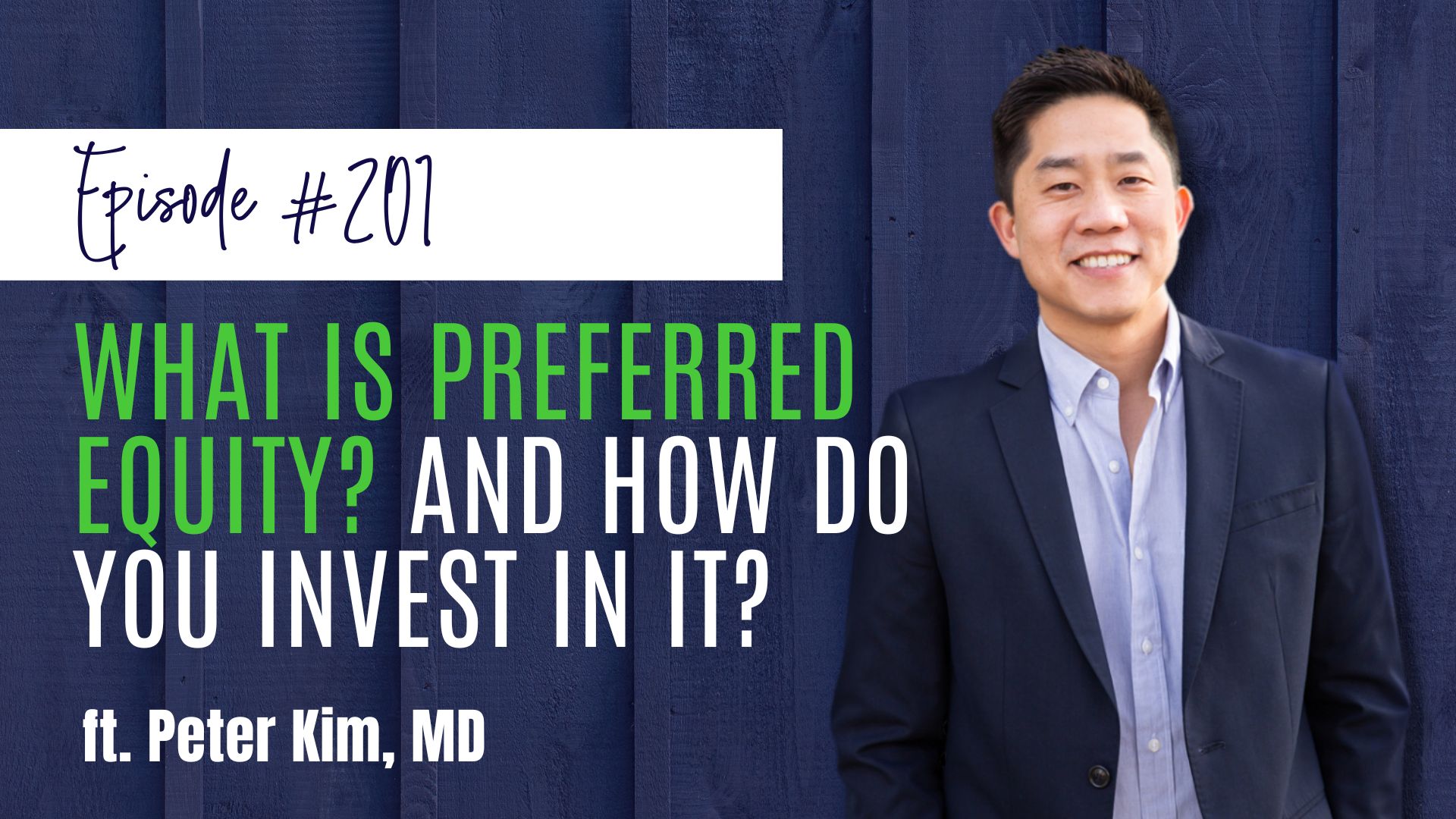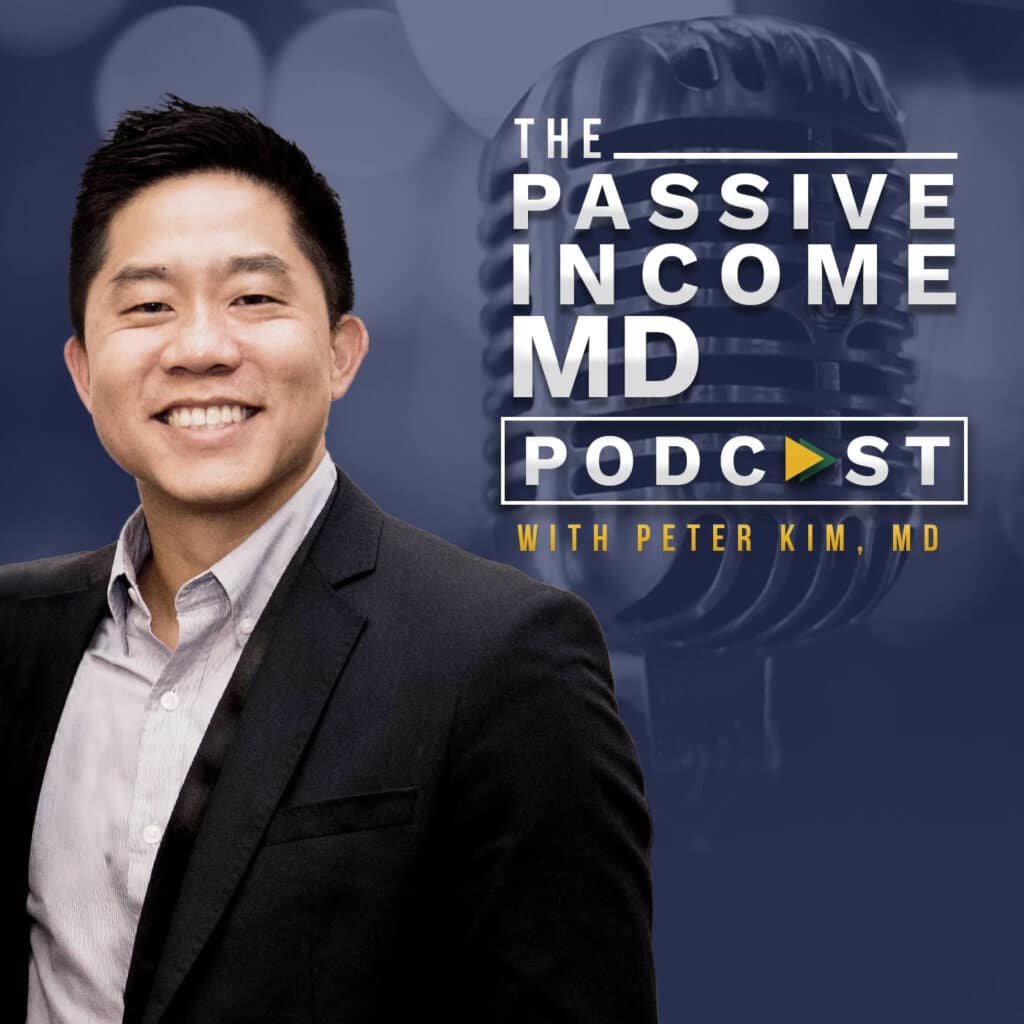
#201 What is Preferred Equity & How Do You Invest in It? ft. Dr. Peter Kim
In this episode, Dr. Peter Kim talks about preferred equity investments and how to invest in them. Discover the advantages of preferred equity, potential risk and returns, how to get paid, benefits for investors, and the importance of due diligence in making intentional investment decisions.
We talk in-depth about all of this and more in our course–Passive Real Estate Academy. Want to learn everything about investing in real estate with confidence? You can grab your seat right here!
Like what you heard? Subscribe and Rate us!
Episode Highlights
Now, let’s look at what we discussed in this episode:
- What is Preferred Equity?
- Preferred Equity in the Capital Stack
- The Potential Risk and Returns
- How to Get Paid as Preferred Equity
- What are the Benefits for Investors?
Here’s a breakdown of how this episode unfolds.
Episode Breakdown
What is Preferred Equity?
Peter starts by introducing preferred equity, also known as pref equity in real estate syndications.
He mentions that it is considered conservative as it holds priority over common equity in investments, particularly during repayment after debt, and that this type of equity is significant for investors in real estate deals.
Preferred Equity in the Capital Stack
Dr. Kim elaborates on the position of preferred equity in the capital stack in real estate investments, highlighting the priority of the senior loan in repayment before any profit distribution.
He mentions that the senior loan is the lowest risk as it must be repaid first, ensuring the bank or primary lender receives their share before other investors, Peter also touches on the structure of syndications where common equity investors come after the senior loan in the capital stack, emphasizing the repayment hierarchy in property sales and profit distribution.
The Potential Risk and Returns
Peter continues discussing more about Preferred equity, with a focus on its potential risk and returns.
Situated between the senior loan and common equity in real estate investments, Preferred equity holds preference over common equity but is subordinate to the senior loan, offering a balanced risk-reward profile.
And since it’s structured with characteristics of both debt and equity, it can have fixed returns or potential upside, with varying payment frequencies such as monthly, quarterly, or at maturity. With a maturity date and potential for extensions, preferred equity is paid after the senior loan but before common equity investors, reflecting its risk position in the capital stack.
Alternatively, if structured more like common equity, investors may receive upfront percentages and participate in property performance, with returns typically lower than common equity due to the associated risk profile and payment hierarchy.
How to Get Paid as Preferred Equity
Dr. Kim talks about how to get paid as preferred equity, mentioning two payment structures: current and accrued.
Current payments are received regularly like debt, ensuring a fixed return regardless of property performance. In contrast, accrued payments accumulate for later disbursement, posing risks tied to property success.
He shares that understanding these distinctions is crucial when evaluating investment opportunities. And that when deciding between a deal with a mix of current and accrued returns versus one offering solely current payments, one should consider factors like risk tolerance, portfolio diversification, trust in the operator, and market conditions.
What are the Benefits for Investors?
Peter Kim concludes by discussing how preferred equity investments have gained popularity due to high-interest rates and property value fluctuations.
He shares that investors can benefit from the cash flow focus of these investments, with options for both current cash flow and accrued returns. He reasons that diversifying a portfolio with preferred equity can enhance predictability in cash flow but advises that proper due diligence is crucial when selecting investments, considering factors like track record, risk profile, and goals.
Overall, he reminds everyone that understanding investments and making intentional decisions based on due diligence can lead to better outcomes. He recommends going through resources like books, joining communities, and courses such as the Passive Real Estate Academy, which can aid in learning how to conduct thorough due diligence.
“I want to let you know that we have our course and community called Passive Real Estate Academy, where in four weeks, you’ll learn how to do the proper due diligence for all of this stuff.” — Peter Kim, MD.




